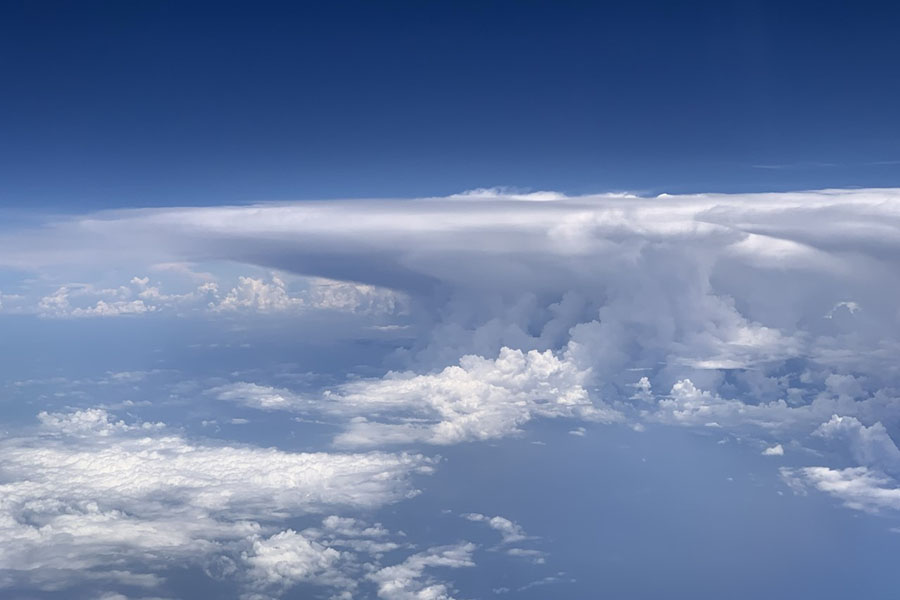

A Florida State University climate scientist is leading an international project aimed at generating a better understanding of the role tropical clouds play in a warming climate.
Allison Wing, assistant professor of meteorology in the Department of Earth, Ocean and Atmospheric Science, is the lead organizer of the 41-member project, which is simulating how clouds could change using a variety of weather and climate models. The work thus far has spurred a pair of papers that demonstrate that while scientists expect climate warming overall, how much warming is determined, in part, by how clouds respond.
"Clouds have been shown by the United Nations' Intergovernmental Panel on Climate Change to be the biggest source of uncertainty when we think about our future warming," Wing said. "That's why it's so important that we work to understand what controls these cloud properties, under a changing climate, because that will allow us to simulate them better and reduce that uncertainty."
Because the tropics cover more than a third of the Earth, tropical clouds have an outsized impact on the Earth's climate and were chosen as the focus, Wing said.
The first paper is an overview of the entire "Radiative-Convective Equilibrium Model Intercomparison Project," known as RCEMIP, and was published in the Journal of Advances in Modeling Earth Systems. Researchers used a simplified and idealized version of the tropical atmosphere, controlling for other real-world factors such as jet streams and weather fronts, and tested how it performed in 30 weather models.
"In climate science, we do these 'Model Intercomparison Projects' where we take a collection of different weather models or climate models from labs around the world and have them run the same simulation," Wing said. "We can then compare the models to each other and see where they differ and agree."
Among the findings was that most models agree that the coverage of high clouds associated with thunderstorms shrinks as climate warms. Models also agree that when clouds and thunderstorms are more clustered, the environment is drier and warmer, with fewer high clouds.
Catherine Stauffer, one of Wing's doctoral students and the paper's second author, was instrumental in wrangling data from the models.
"I had the opportunity to do a majority of the data processing including the creation of most of the figures and tables used in the paper," Stauffer said, "as well as calculations of the various metrics we used, such as defining how clustered the clouds are or the impact of changes in various atmospheric properties - like cloud amount - on the climate."
The data was publicly released along with the paper so other scientists who weren't involved could benefit. Wing said she expects the original research and data set to generate a series of projects and papers in the future.
The second paper, also published in the Journal of Advances in Modeling Earth Systems, investigates why there's a large spread in climate sensitivity, or how strongly the climate would warm in response to an external forcing such as increased carbon dioxide, across the ensemble of models.
"Two things really contributed to the intermodel spread of climate sensitivity," Wing said. "The first was the way the model represented how shallow clouds would change with warming and the other was how cloud clustering would change."
How tropical clouds respond and how clustering works are important factors in predicting how our climate overall may change in the coming years. Exactly how much Earth warms depends on "feedbacks" - for example, increased carbon dioxide produces warming, which changes clouds and humidity and causes ice to melt, which drive further changes, Wing said. Future climate projections depend on understanding these feedback elements in the climate system, with cloud feedbacks playing a major role.
FSU's analysis of the models, in collaboration with researchers from Stony Brook University, New York, is supported by a grant from the National Science Foundation.






